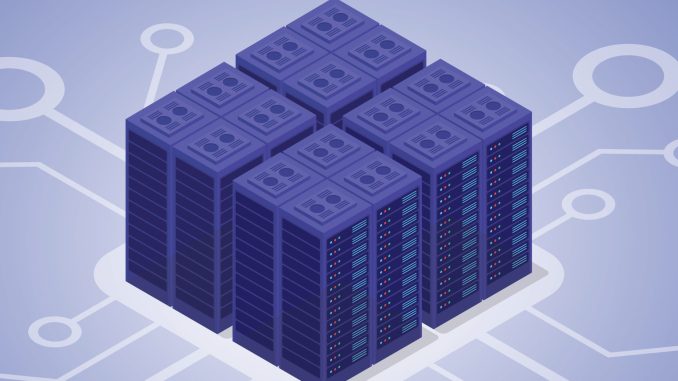
Types of Amazon EBS Volumes (In-Depth Explanation with Examples)
Amazon Elastic Block Store (EBS) offers different volume types categorized into SSD-based (optimized for high performance and low latency) and HDD-based (optimized for high throughput and cost-effectiveness). Each type is designed for specific workloads, such as databases, big data, backup storage, and general-purpose applications.
1. SSD-Based Volumes (Optimized for IOPS & Low Latency)
SSD (Solid-State Drive) volumes are designed for high-speed random access workloads. They provide high IOPS (Input/Output Operations Per Second), making them ideal for transactional databases, virtual desktops, and boot volumes.
A) gp3 (General Purpose SSD – Next Generation)
✅ Best for: Web servers, small to medium databases, development/testing environments.
✅ Key Features:
- Baseline IOPS: 3,000 and 125 MB/s throughput (independent of size).
- Can scale up to 16,000 IOPS and 1,000 MB/s throughput.
- More cost-effective than gp2 (lower price with better performance control).
- Users can provision IOPS & throughput independently.
🔹 Example Use Case:
A company running an e-commerce website with a MySQL database can use gp3 to handle moderate transactions without overpaying for performance.
B) gp2 (General Purpose SSD – Older Generation)
✅ Best for: General workloads, boot volumes, application servers.
✅ Key Features:
- Baseline performance 3 IOPS per GiB (e.g., a 100 GiB volume = 300 IOPS).
- Burst mode allows up to 16,000 IOPS but depends on credit balance.
- Performance scales with volume size (e.g., 1 TiB volume = 3,000 IOPS).
🔹 Example Use Case:
A startup hosting a WordPress blog on an EC2 instance can use gp2 for cost-effective, burstable performance.
📌 Difference Between gp3 and gp2
| Feature | gp3 | gp2 |
|---|---|---|
| Baseline IOPS | 3,000 (fixed) | 3 IOPS per GiB |
| Max IOPS | 16,000 | 16,000 (burst mode) |
| Throughput | Up to 1,000 MB/s | Up to 250 MB/s |
| Cost | Lower than gp2 | Higher due to burst dependency |
C) io1 & io2 (Provisioned IOPS SSD – High-Performance)
✅ Best for: High-performance applications like databases, SAP workloads, and latency-sensitive applications.
✅ Key Features:
- High-performance SSD with IOPS up to 256,000.
- Low-latency (1 ms) and high durability (io2 has 99.999% durability).
- Supports Multi-Attach, allowing multiple EC2 instances to access the same volume.
📌 Difference Between io1 and io2
| Feature | io1 | io2 |
|---|---|---|
| Max IOPS | 64,000 | 256,000 |
| Durability | 99.9% | 99.999% |
| Cost | Higher | Lower than io1 |
🔹 Example Use Case:
A bank running an Oracle database for real-time transaction processing should use io2 volumes to ensure consistent, ultra-low latency performance.
2. HDD-Based Volumes (Optimized for Throughput & Cost-Effectiveness)
HDD (Hard Disk Drive) volumes are designed for sequential read/write operations, such as big data processing, data warehousing, and log storage.
D) st1 (Throughput Optimized HDD)
✅ Best for: Big data, log processing, data warehouses, streaming workloads.
✅ Key Features:
- Designed for sequential workloads that require high throughput.
- Baseline throughput: 40 MB/s per TiB (can burst up to 500 MB/s).
- Lower cost per GB than SSDs.
🔹 Example Use Case:
A media company processing terabytes of video logs for analytics can use st1 to store data cost-effectively while maintaining high throughput.
E) sc1 (Cold HDD – Cheapest)
✅ Best for: Rarely accessed data, backups, archival storage.
✅ Key Features:
- Lowest-cost EBS volume for cold storage.
- Baseline throughput: 12 MB/s per TiB, can burst up to 250 MB/s.
- Not suitable for frequent or high-speed transactions.
🔹 Example Use Case:
A healthcare provider storing patient history records (accessed only a few times per year) can use sc1 to save costs while keeping data available when needed.
3. Comparison Table: All EBS Volume Types
| Volume Type | Storage Type | Max IOPS | Max Throughput | Best Use Case |
|---|---|---|---|---|
| gp3 | SSD | 16,000 | 1,000 MB/s | Web servers, databases, general workloads |
| gp2 | SSD | 16,000 | 250 MB/s | Boot volumes, application servers |
| io1 | SSD | 64,000 | 1,000 MB/s | High-performance databases |
| io2 | SSD | 256,000 | 4,000 MB/s | SAP, financial transactions |
| st1 | HDD | 500 | 500 MB/s | Big data, analytics, logging |
| sc1 | HDD | 250 | 250 MB/s | Backup, cold storage |
4. Choosing the Right EBS Volume
✅ When to Use SSD (gp3, gp2, io1, io2)
- Frequent read/write operations (databases, web applications, microservices).
- Low-latency transactions (financial systems, AI training).
- High-performance computing (HPC) applications.
✅ When to Use HDD (st1, sc1)
- Large-scale data processing (big data, machine learning pipelines).
- Sequential workloads (log files, backup storage).
- Archival data that is infrequently accessed.
5. Conclusion
Amazon EBS offers a variety of volume types, each optimized for different use cases. Understanding the differences helps you choose the right storage, improve performance, and optimize costs.
If you need more information or want to outsource your AWS project, feel free to contact us! We provide expert AWS solutions, including EBS management, EC2 setup, cost optimization, and infrastructure maintenance.
📩 Get in touch today! 🚀
